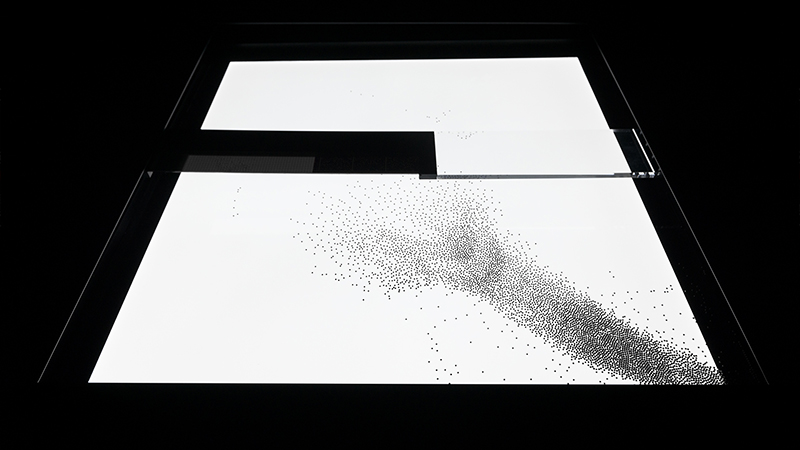Code of Music
Drums
Single Button Chip Tune Drums
For whatever reason, editor.p5.js is not granting access to the audio files so this will not make any sound.
Not allowed to request resource
XMLHttpRequest cannot load http://editor.p5js.org/full/SyM7DLNtX/ECS%20HH%2021.mp3 due to access control checks.
...
Inspiration
I first played with the Infinite Drum Machine by Chrome AI Experiments. The science behind it is quite amazing - the fact that as sounds are loaded, a machine learning algorithm groups them just by the raw audio. For example, “walkie-talkie” sounds were not very well grouped, while high-pitched bells and voices were paired together. I also found it incredibly satisfying to drag the cursor around the screen triggering a cacophony of samples. A couple critiques of the instrument - I don’t think I would have figured out the machine learning component without watching the video triggered by the question mark in the corner. I also was unable to make anything that sounded very musical. The sequencing component felt like it was added on top of something super exciting.

Second, I played with the IO-808. On first glance, I found the interface to be pretty complex. (There are so many buttons, one needs to scroll to see everything.) For like three minutes, I tried clicking random buttons and couldn’t get a sound playing. The biggest problem is the play button. It doesn’t provide any feedback to indicate it’s been pressed. (e.g. changing drop shadow inward or changing color). Confounding that problem is that the app does not start with any pre-programmed beats, and it needs to be playing for beats to added. (Otherwise, that line sets pattern length.) So, the user has to press play even though nothing happens, and then add beats. I ended up having to reset the page and then glance through the documentation to get it working. Once I made it that far though, I found the interface to be fun and musical and experimented for about ten minutes.

Design Idea
I fell in love with this Ryoji Ikeda artwork called Supersymmetry and decided I wanted to create my own beat-based version.

Sketch
I spent a long time on the source code and I think that it largely speaks for itself.
- The random starting rhythms are inspired by the Groove Pizza’s geometric shape feature. Regular polygons include optimally spaced out points, and most of the time sound really good when sonified into rhythm.
- When I was experimenting with the IO-808, I found that after I got a base beat started, I had fun just building and building and adding on top of it. I wondered if maybe a single-button interface could do this addition for the user.
- The sounds themselves come from a Royalty Free Source called Henry Homesweet’s Essential Chips and Sounds. I added panning (which took some trial and error), as well as a little reverb and some slight volume randomness to keep things interesting.
- The particles are randomly added to the screen with a skew towards the bottom right corner and they become brighter the closer they get to the corner. There aren’t quite enough to match the Ryoji Ikeda artwork - but maybe a micro-tone experiment with tons and tons of buzzing sounds could match the aesthetic a little better.


A blog for displaying Willie Payne’s progress in the NYU ITP Course “The Code of Music.”
